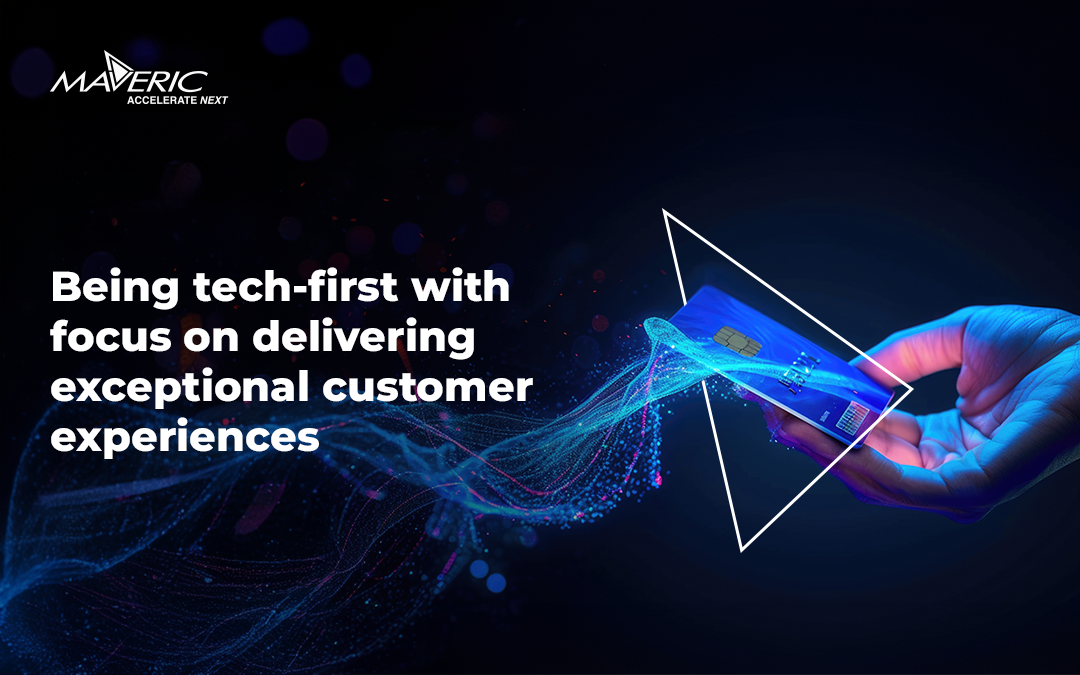What is common between Zomato, Amazon, Uber, Tesla, and the burgeoning fintechs? They are tech-first and focus on delivering exceptional customer experiences. The raison d’etre of any business is to create, maintain, and deliver exceptional customer experiences and value. Prioritizing customer-centricity is not just a preference; it’s an imperative in the 21st century. Simply put, customer experience cannot be looked at as a cost center and a business function, it is the business and the differentiator which will separate you from your peers. With technological advancements, consumers demand personalized solutions, and predicting shifts in consumer behavior is paramount. For this a transition from a “mobile-first” to a “user-first” mindset is necessary. Organizations need to adapt swiftly to meet the rising demand for personalised, seamless experiences that transcend traditional boundaries of servicing by prioritizing creating and designing with a ‘user-first’ approach.
Often, I hear that financial institutions, though aware of the importance of delivering exceptional customer experience (CX), face significant implementation roadblocks. One of the primary reasons is commitment from the leadership or misalignment within teams. Another obstacle is the lack of catalysts—committed agents who would defy the norms and create momentum for change. If put together, through a strategic reassessment, all these factors can add to any financial institution achieving the pinnacle of customer-centricity that defines not just success, but builds a legacy of trust, innovation, and enduring customer satisfaction.
While traditional financial institutions still play catch-up when it comes to customer experience, fintechs, enabled by having a technology-first and CX-first mindset, are disrupting the space. How?
Fintechs are at the center of driving Enhanced customer-centricity
At the core of this change lies a fundamental dichotomy: a divide between the status quo and the imperative for change. Unlike legacy systems of traditional banks, fintechs understand the pain point of the system and have struck a balance by addressing both operational efficiency and customer satisfaction. With their competitive and persistent focus on customer experience and efficiency, they serve for change and have created a blueprint for innovation. Drawing inspiration from diverse industries such as technology, retail, and healthcare, these agile startups have redefined the boundaries of financial services, elevating user experience from being just another tick in the box to a necessity, a differentiator, and a customer acquisition strategy. Their success comes from creating cutting-edge, original functionalities that appeal to digital users rather than just mimicking traditional banking models. The ability to make payments through a few taps on your smartphone is a classic example of fintech disruption.
What can traditional banks learn from fintechs?
Traditional financial institutions can navigate several challenges by adopting a few best practices brought in by fintechs such as agile development methodologies or enhanced user interface, fostering a culture of innovation, and in strategically investing in fintech ventures. They must prioritize migrating products and customer-facing components towards a user-first approach. Ensuring that their employees’ experiences align with this approach is equally essential, as both internal and external customers should benefit from a user-first mindset. The reason fintechs have excelled and have led this transformation is due to their deep understanding of customer needs, ability to use technology to understand data led trends from various streams, and designing user-first platforms, drawing inspiration from several different industries including retail and healthcare. Banks can adopt these principles by implementing similar UX/UI designs, integrating fintech solutions for specific segments, creating innovation labs, and investing in promising innovators. This approach enables banks to bridge the gap between their current capabilities and the expectations of digital-savvy customers, utilizing fintech agility and customer-centric strategies to enhance operations. By doing so, institutions can remain competitive, set new benchmarks for innovation, and improve customer satisfaction in an evolving market landscape.
Partnering with the right Fintech player to optimise operations.
Many major Indian and global institutions are strategically embracing fintech partnerships, integrating a diverse array of fintech solutions into their portfolios. These collaborations typically fall under several categories such as real-time solutions, addressing regulatory challenges in the areas of KYC, CDD, PEP, Fraud, AML; Payments, including real-time domestic and cross-border transactions; innovation in new products or business lines, such as digital assets within wealth management, cards, or expanding into new business lines; and the launch of independent digital banks, often with a focused business line such as retail banking or SME lending. Partnering with the right fintech players has been instrumental for financial institutions in enhancing customer experience, enabling greater efficiency, capabilities to offer personalised solutions, and keeping innovation at the forefront of operations.
How do you develop an innovation-first mindset?
Many financial institutions have been establishing innovation arms, dedicating substantial capital and infrastructure to bring the latest technologies to their offerings and solutions and to support fintech-like growth. This will serve as an incubation hub, providing invaluable resources and access to their expansive ecosystems. Cultivating a culture aligned with a user-first approach involves implementing measures such as internal CSAT scores, akin to NPS scores for external customers. Internal systems should adopt hybrid approaches that mirror the principles applied to external customers. Additionally, fostering collaborative efforts for any technological initiatives is crucial, drawing from experiences across the entire lifecycle, from user stories to deployment and support. Another aspect of developing an innovation-first mindset is to think, partner and learn from and with fintechs. These approaches will help develop tailored customer-first solutions, also ensuring these solutions can cater to broader market demands. For instance, a leading Indian bank was the first among its peers to join forces with fintech companies to offer innovative solutions, and launched a Centre of Digital Excellence (CODE), as an initiative to mentor fintechs and startups incubated at the country’s top technical and business schools.
Launch of independent digital banks
Financial institutions, with fintechs, have also begun bringing digital-led banks, strategically leveraging these platforms to showcase the efficacy of various operational levers. From creating seamless customer experiences to optimizing cost-to-income ratios and total cost of ownership (TCO) of technology, these digital banks have started to lead as an example of the power of digitalization in banking. For instance, a successful case study for this would be a leading international bank providing its services across the world, including in India, with no physical branches but enhanced and prompt digital services. By embracing cutting-edge technology as fintechs and reimagining traditional banking models, such institutions not only add to their competitive edge but also set new benchmarks for innovation and customer-centricity in the financial landscape.
To conclude, the future of the financial industry lies in embracing customer-centricity through various strategic measures. Traditional financial institutions can draw inspiration from the success of fintechs by infusing their operations with cutting-edge technology and strategic partnerships. Similarly, initiatives such as launching independent digital banks and incubating special platforms offer opportunities for institutions to showcase their commitment to innovation and customer satisfaction. By doing these, financial institutions can not only stay competitive but also set new standards for excellence in customer experience and innovation, ensuring a steady future of modern finance.
About The Author
 As the Co-founder and whole-time Director at Maveric, P Venkatesh (PV) leads the global thought leadership function aimed at shaping and promoting Maveric’s perspectives as well as expertise in the banking technology space. By building relationships with industry influencers, partners and BankTech ecosystem leaders, PV drives creation of impactful frameworks, methodologies and landscape reports that provide informed perspectives on new age technologies that shape the BankTech space.
As the Co-founder and whole-time Director at Maveric, P Venkatesh (PV) leads the global thought leadership function aimed at shaping and promoting Maveric’s perspectives as well as expertise in the banking technology space. By building relationships with industry influencers, partners and BankTech ecosystem leaders, PV drives creation of impactful frameworks, methodologies and landscape reports that provide informed perspectives on new age technologies that shape the BankTech space.
Originally Published in Express Computer











